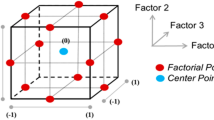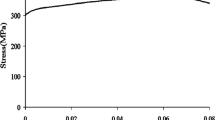Abstract
One of the primary interests in the railway field is to improve speed as well as to secure the safety of railway vehicles at a high speed. In light of this, the demand for braking systems that offer improved performance and safety has also been growing consistently. The braking system is a critical element directly connected with safety. In order to secure reliability and establish the maintenance standard for the braking system, it is necessary to secure an accurate evaluation technology. As the braking disc of the braking system is very sensitive to safety and maintenance, a method to evaluate thermal cracking must be developed. Because the brake disc goes through a repeated process of heating and cooling due to the friction energy and the heat convection, respectively, in every braking action, it is subject to thermal fatigue. As well, the partial contact area caused by friction between disc and pad during the braking process results in thermal distortion, causing a hot band and a hot spot. This thermal distortion may also cause thermal cracking on the friction surface. The aim of this research was to find the cause of thermal cracking through a thermo-mechanical friction analysis of disc and pad, and to verify the analysis model through the dynamo machine.
Similar content being viewed by others
References
J. H. Kim, A study on the mechanical properties of the braking disc due to the temperature change(?), Journal of the Korea Society for Railway, 8 (3) (2005) 222–227.
J. H. Kim, B. C. Goo and C. S. Suk, A study on the temperature change of braking disc and thermal conductivity during the service, Journal of the Korea Society for Railway, 10 (6) (2007) 665–669.
S. Panier, P. Dufrenoy and D. weichert, An experimental investigation of hot spots in railway disc brakes, Wear, 256 (2004) 764–773.
B. C. Goo, A study on the effect of parameters on the temperature distribution of brake discs, Proceedings of the Korean Society for Railway Spring Conference (2007) 7–12.
P. Dufrenoy and D. Weichert, A thermomechanical model for the analysis of disc brake fracture mechanisms, Journal of Thermal Stresses, 26 (2003) 815–828.
C. H. Gao, J. M. Huang, X. Z. Lin and X. S. Tang, Stress analysis of thermal fatigue fracture of brake discs based on thermomechanical coupling, ASME Journal of Tribology, 129 (3) (2007) 536–543.
A. Belhocine and M. Bouchetara, Thermal analysis of a solid brake disc, Applied Thermal Engineering, 32 (2012) 59–67.
B. Chadimi, F. Kowsary and M. Khorami, Thermal analysis of locomotive wheel-mounted brake disc, Applied Thermal Engineering, 51 (2013) 948–952.
L. Zhiqiang, H. Jianmin, Y. Zhiyong and L. Weijing, Analyzing the mechanisms of thermal fatigue and phase change of steel used in brake discs, Engineering Failure Analysis, 57 (2015) 202–218.
P. Grzes, W. Oliferuk, A. Adamowicz, K. Kochanowski, P. Wasilewski and A. A. Yevtushenko, The numericalexperimental scheme for the analysis of temperature field in a pad-disc braking system of a railway vehicles at single braking, International Communications in Heat and Mass Transfer, 75 (2016) 1–6.
P. Hwang and X. Wu, Investigation of temperature and thermal stress in ventilated disc brake based on 3D thermosmechanical coupling model, Journal of Mechanical Science and Technology, 24 (2010) 81–84.
R. Limpert, Brake design and safety, Second ed., Warrendale, PA: Science of Automotive Engineers Inc, USA (1992).
UIC CODE 541–3, Brakes-Disc brakes and their application-General conditions for the approval of Brake pads, 7th Eds. (2010).
M. S. Kim, J. G. Kim, B. C. Koo and N. P. Kim, Analysis on the test results of disc brakes using the brake dynamometer, Proceedings of the Korean Society for Precision Engineering Spring Conference (2011) 1555–1556.
Author information
Authors and Affiliations
Corresponding author
Additional information
Recommended by Associate Editor Jaewook Lee
Ho-Yong Lee received the Ph.D. degree in mechanical design engineering from Sungkyunkwan University in 2005. He is currently a Senior Researcher of Korea Railroad Research Institute. His research areas include the structure analysis, fatigue/fracture mechanics, system reliability, and brake system.
Rights and permissions
About this article
Cite this article
Hong, H., Kim, M., Lee, H. et al. A study on an analysis model for the thermo-mechanical behavior of a solid disc brake for rapid transit railway vehicles. J Mech Sci Technol 32, 3223–3231 (2018). https://doi.org/10.1007/s12206-018-0322-6
Received:
Revised:
Accepted:
Published:
Issue Date:
DOI: https://doi.org/10.1007/s12206-018-0322-6




